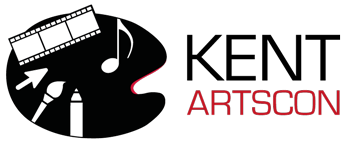My name is Harris Ali Khan and I am a medical doctor and a public health practitioner from Abbottabad, Pakistan. Although my chosen profession was quite different from my interest in Arts, and mainly Fibre-arts, over the years and through some personal experience, I was able to find the connection between two different worlds. Fibre arts like Crochet, Micro-Macrame, knitting, Embroidery, weaving and Passementerie-making have always fascinated me. I self-taught these skills and learned to express myself through this art form. Later, while working in the U.K. in different mental health facilities, I observed the beneficial effects of learning even simple Fibre art forms on mental health and general well-being. After finishing my master’s in Public Health and another one in Health policy, I am eager to explore more in these areas and to find a link where these art forms connect with Public health and if expressive therapies through fibre arts can bring a change in people’s lives.
Visual Presentation: Fibre Arts and Mental Health
Arts and creative activities are known to have beneficial effects on both mental and physical health. By improving self -understanding, enhancing self-esteem, creating a sense of achievement, increasing the ability to overcome challenges and difficulties, increasing self-resilience, and also creating a positive ripple effect in the society. (Parr, 2005).
Fibre arts have shown positive effects in stabilizing mood and enhancing mental health. They are used in different kinds of therapies. Different types of fibre arts can be helpful in overcoming various mental health issues, such as Needlework has proven to helpful in improving self-esteem and also hand-eye coordination. Whereas Quilting and sewing are often helpful in providing emotional stability. (Hermann et al., 2023)
Fibre arts are known to produce sensory responses to textures and contours in a way which is not facilitated by other art forms. Now fibre arts are not just limited to basic patterns, simple knots, and endless stitches, they have evolved into an expression and like any other art form, it’s possible to use fibre arts as an expressive art therapy. (Hess, 2023)
Sewing is increasingly used as a medium to help people tell their stories, In India, there is a tradition of telling folk stories through embroidery on “Chamba Rumal” (Handkerchief of Chamba). Similarly, Storytelling through papier maché and carpet weaving is still practised in Kashmir, which enhances the fact that these techniques can help people express their inner feeling just like a painter does that on a Canvas. (Garlock, Lisa. 2016)
Macrame and Embroidery were used as tools to improve mental health in a community mental health Programme in Trinidad with the results that the rates of Alcoholism and depression were considerably reduced by these activities. (James et al., 1986)
Rationale
The purpose of this presentation is to focus on the beneficial effect of Fibre-arts such as Macrame and Crochet on mental health and their use to express human emotions and expressions. Most basic Crochet requires using the same stitches in a sequence that allows a person to unravel complicated thoughts and express them through a practical activity. Similarly, Macrame involves the constant use of Knots, tying and untying threads and ropes to form different shapes and structures which can be three-dimensional. These activities allow a freedom of expression through the manipulation of fibres, strength of the knots and stitches and help the mind to gain focus and clarity besides increasing the levels of serotonin in the body which increases satisfaction, happiness and optimism.
